The Truth About Offshore Development That Most Companies Miss
From selecting the perfect partner to managing distributed teams, master offshore software development with our no-nonsense guide.

The digital landscape never sleeps. As I write this from our development hub in Bangalore, half our team is winding down while the other half is just firing up their laptops. This isn't just a time zone quirk—it's the beating heart of what makes offshore software development work.
The days of offshore development being merely a cost-cutting measure are long gone. Today, it's about accessing global talent pools, accelerating development cycles, and bringing innovation to market faster than your competitors can blink. At 1985, we've watched this evolution firsthand, transitioning from simple code factories to becoming strategic innovation partners for companies ranging from scrappy startups to Fortune 500 giants.
But let's cut through the marketing speak. Offshore development isn't magic—it's a strategic business approach with distinct advantages and challenges. This guide will walk you through the realities of modern offshore development, based on our decades of experience building software across continents.
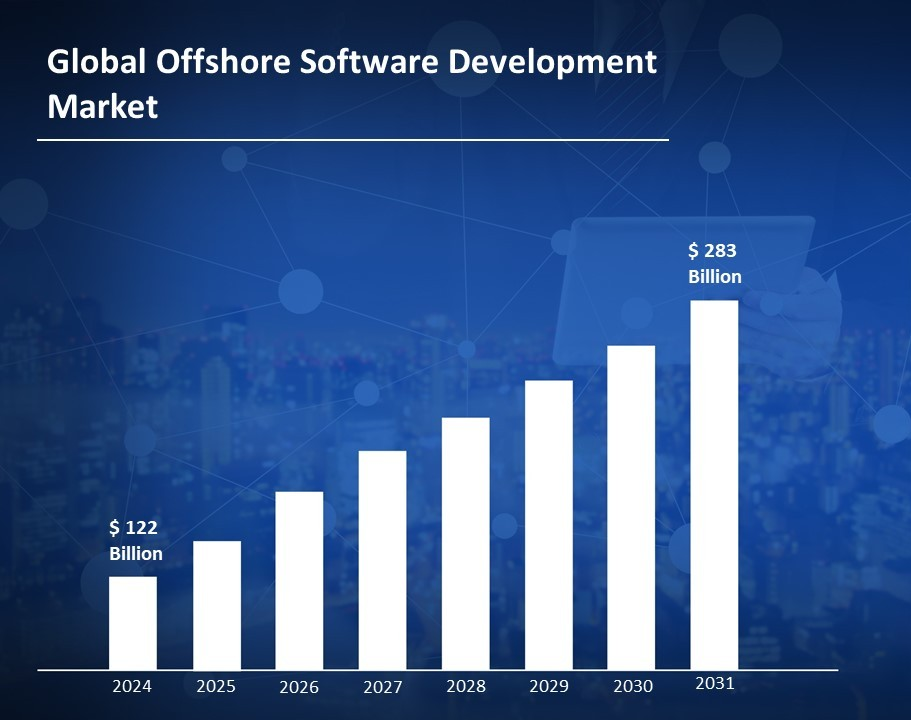
The Offshore Landscape in 2025
The offshore development market has matured significantly. What began as a cost arbitrage play has evolved into a sophisticated ecosystem of specialized talent hubs across the globe. According to Gartner's latest report, the global IT outsourcing market reached $413.7 billion in 2024, with software development representing the largest segment.
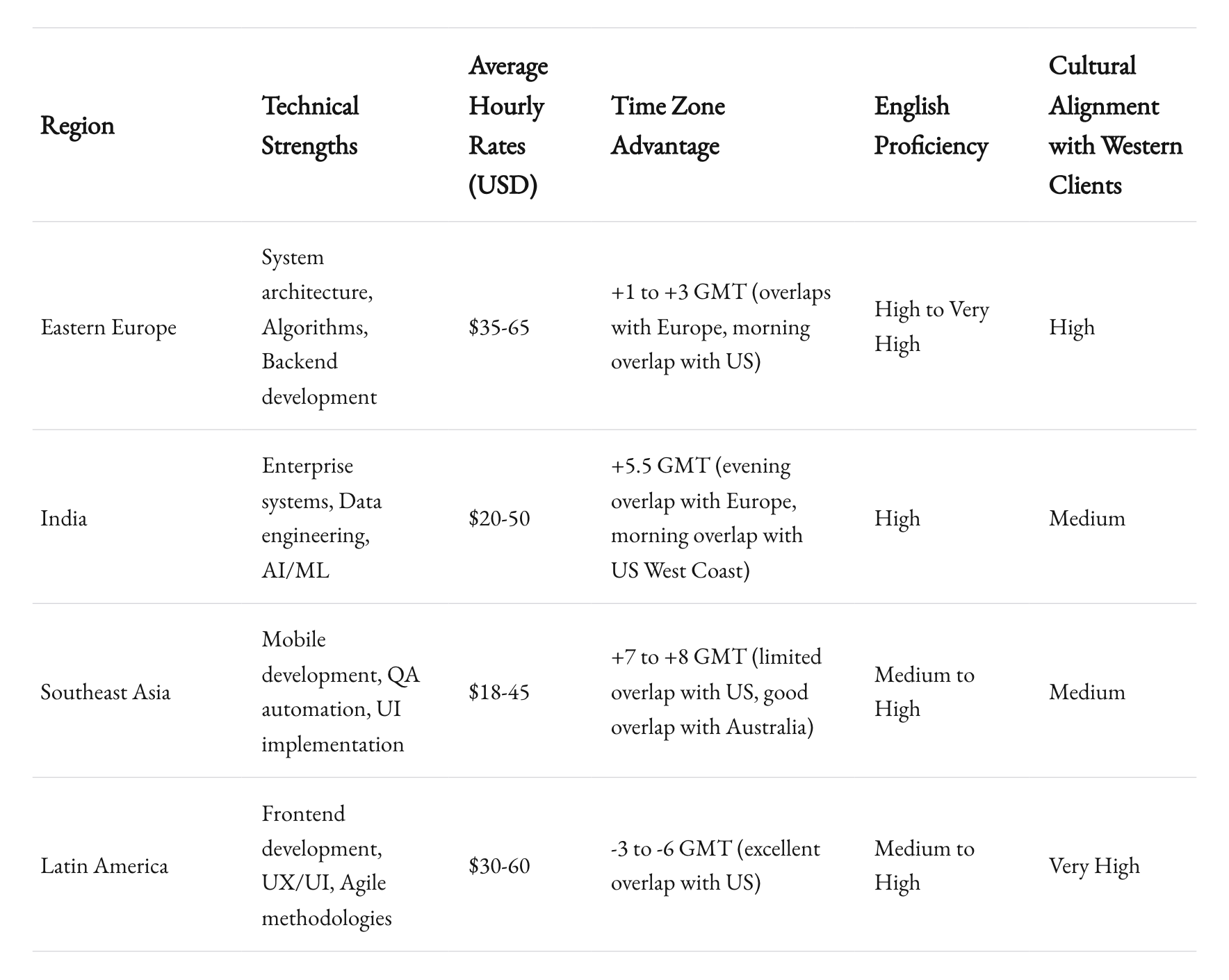
Eastern Europe, once the rising star, has now firmly established itself as a premium development destination, with countries like Poland, Ukraine, and Romania hosting development centers for companies like Microsoft, Google, and IBM. Their technical universities produce over 60,000 IT graduates annually, creating a steady pipeline of talent with strong mathematical foundations and problem-solving skills.
Meanwhile, Southeast Asia continues its rapid ascent. Vietnam has positioned itself as a specialized hub for mobile development and QA automation, while the Philippines leverages its strong English proficiency for customer-facing applications and support systems. India, the original offshore giant, has moved upmarket, focusing on enterprise architecture, AI implementation, and complex systems integration.
Latin America has carved out its niche as the nearshore option for North American companies, with Argentina, Colombia, and Mexico offering similar time zones and cultural alignment. Their developers command higher rates than their Asian counterparts but deliver value through real-time collaboration and reduced communication friction.
The Real Economics of Going Offshore
Let's talk money. Yes, cost savings remain a driver for offshore development, but the calculus has become more sophisticated. The raw hourly rate differential—paying $25-50/hour instead of $100-150/hour in major US tech hubs—tells only part of the story.
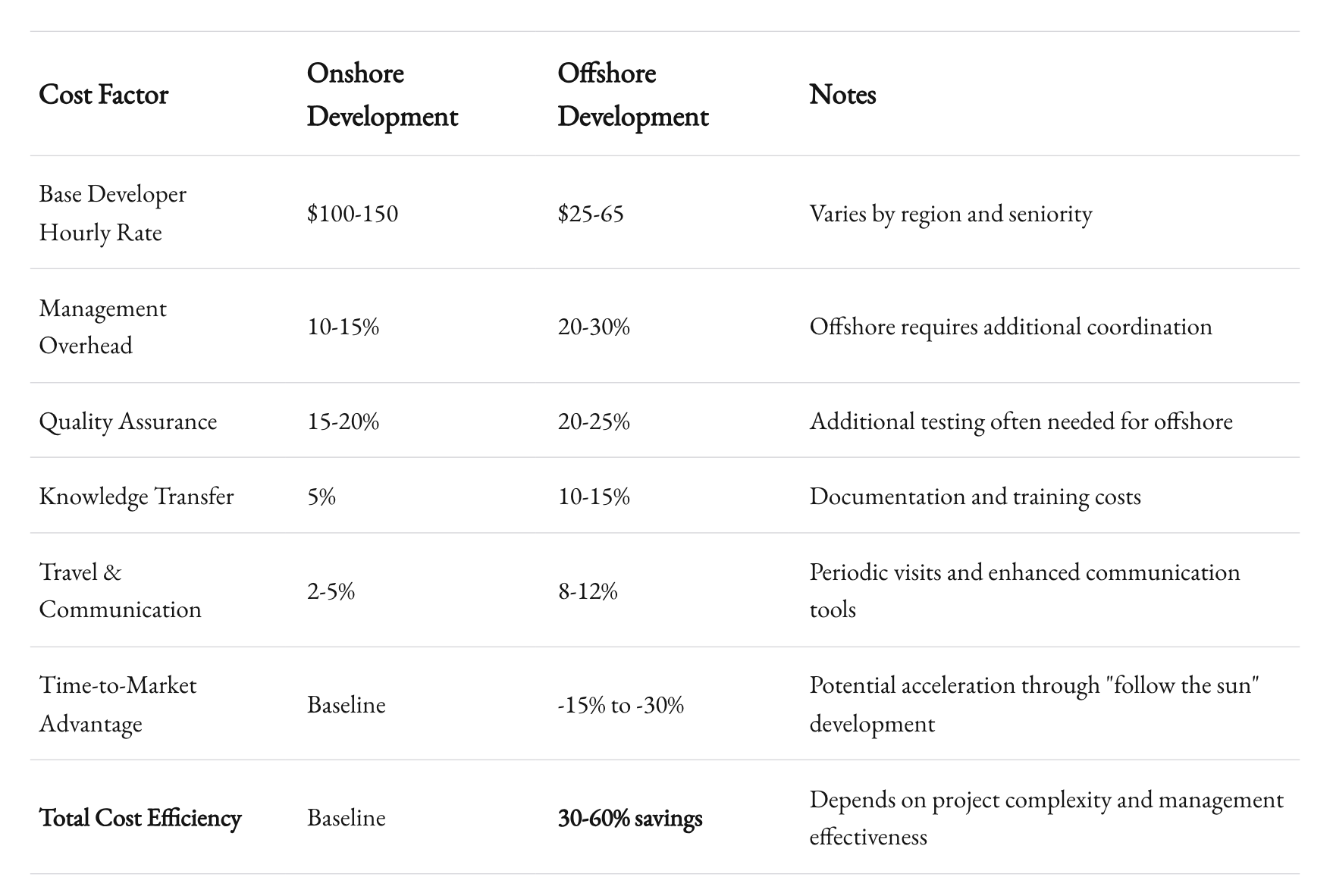
The true economic equation includes factors like productivity differentials, communication overhead, quality assurance costs, and the time value of faster market entry. A senior developer in Warsaw might cost 60% of their San Francisco counterpart, but if they deliver 90% of the productivity with 15% less rework due to quality issues, the economics become compelling.
At 1985, we've found that the most successful offshore engagements focus on total value creation rather than hourly rate arbitrage. One of our healthcare clients initially approached offshore development seeking cost reduction but discovered that the primary benefit was actually speed-to-market. By running parallel development tracks across time zones, they launched six months earlier than projected, capturing market share that more than offset the development investment.
The hidden costs deserve mention too. Management overhead, knowledge transfer, cultural alignment, and occasional travel all factor into the true cost of offshore development. Companies that budget only for developer hours often find themselves surprised by these additional expenses, which typically add 15-30% to the base development costs.
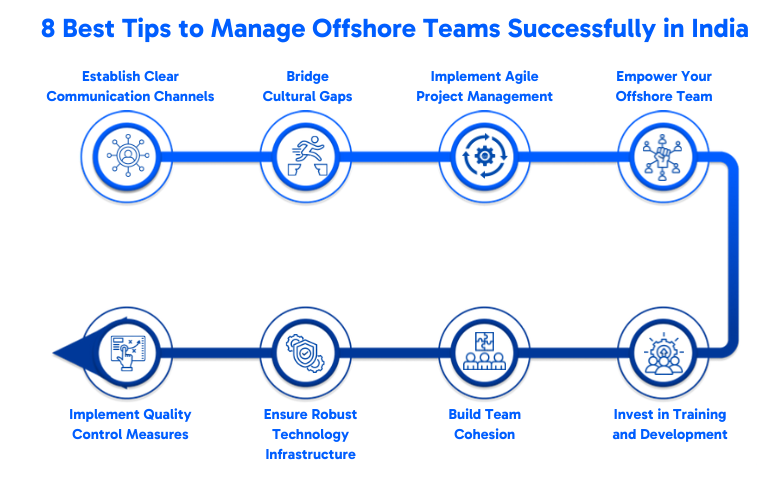
Selecting the Right Offshore Partner
Finding the right offshore partner resembles dating more than procurement. Technical capabilities matter, but cultural fit and communication patterns often determine success or failure. We've seen technically brilliant teams fail because they couldn't adapt to the client's working style, while technically adequate teams succeeded through superior collaboration.
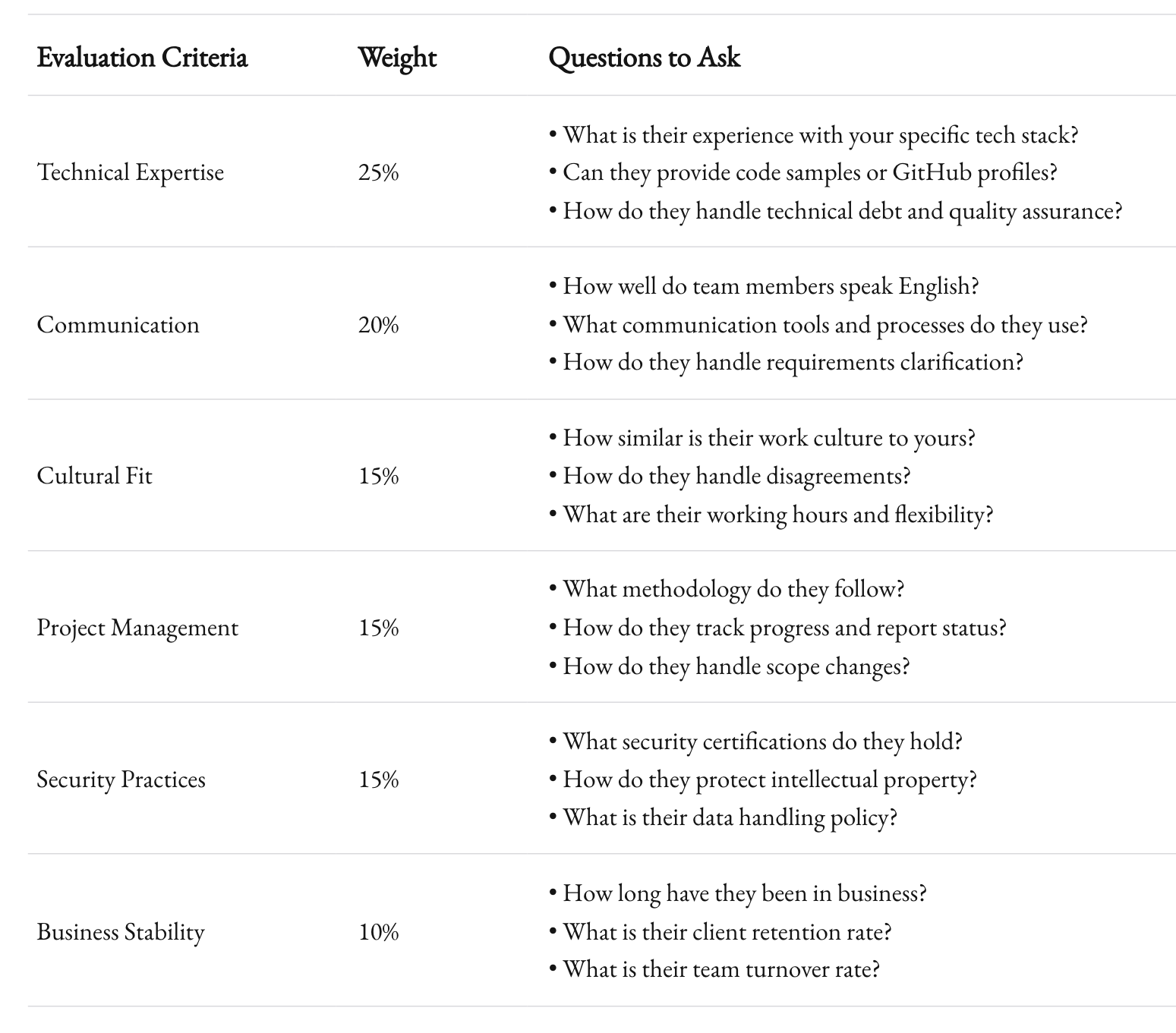
When evaluating potential partners, look beyond the sales pitch. Request detailed case studies of similar projects. Speak directly with the proposed team members, not just account managers. Assess their English proficiency, communication style, and cultural compatibility with your organization.
Technical assessment should go deeper than checking for certifications or years of experience with specific technologies. Give candidates a small paid test project that mimics your actual work. This reveals not just technical competence but also how they handle requirements, communicate challenges, and respond to feedback.
Location selection deserves careful consideration. Each region offers different advantages:
- Eastern Europe: Strong in complex algorithms, system architecture, and backend development
- India: Excels in enterprise systems, data engineering, and large-scale applications
- Southeast Asia: Specializes in mobile development, QA automation, and UI implementation
- Latin America: Offers strong frontend skills, UX/UI expertise, and real-time collaboration
At 1985, we maintain development centers across multiple regions, allowing us to match client needs with the most appropriate talent pool. This hybrid approach has proven particularly effective for complex projects requiring diverse skill sets.
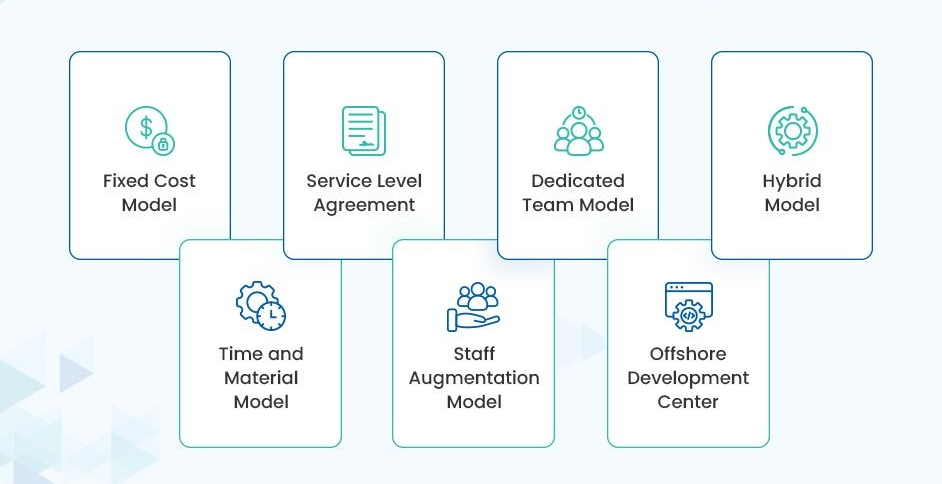
Engagement Models That Actually Work
The traditional fixed-price versus time-and-materials debate misses the point. Modern offshore engagements require more nuanced approaches that align incentives and distribute risk appropriately.
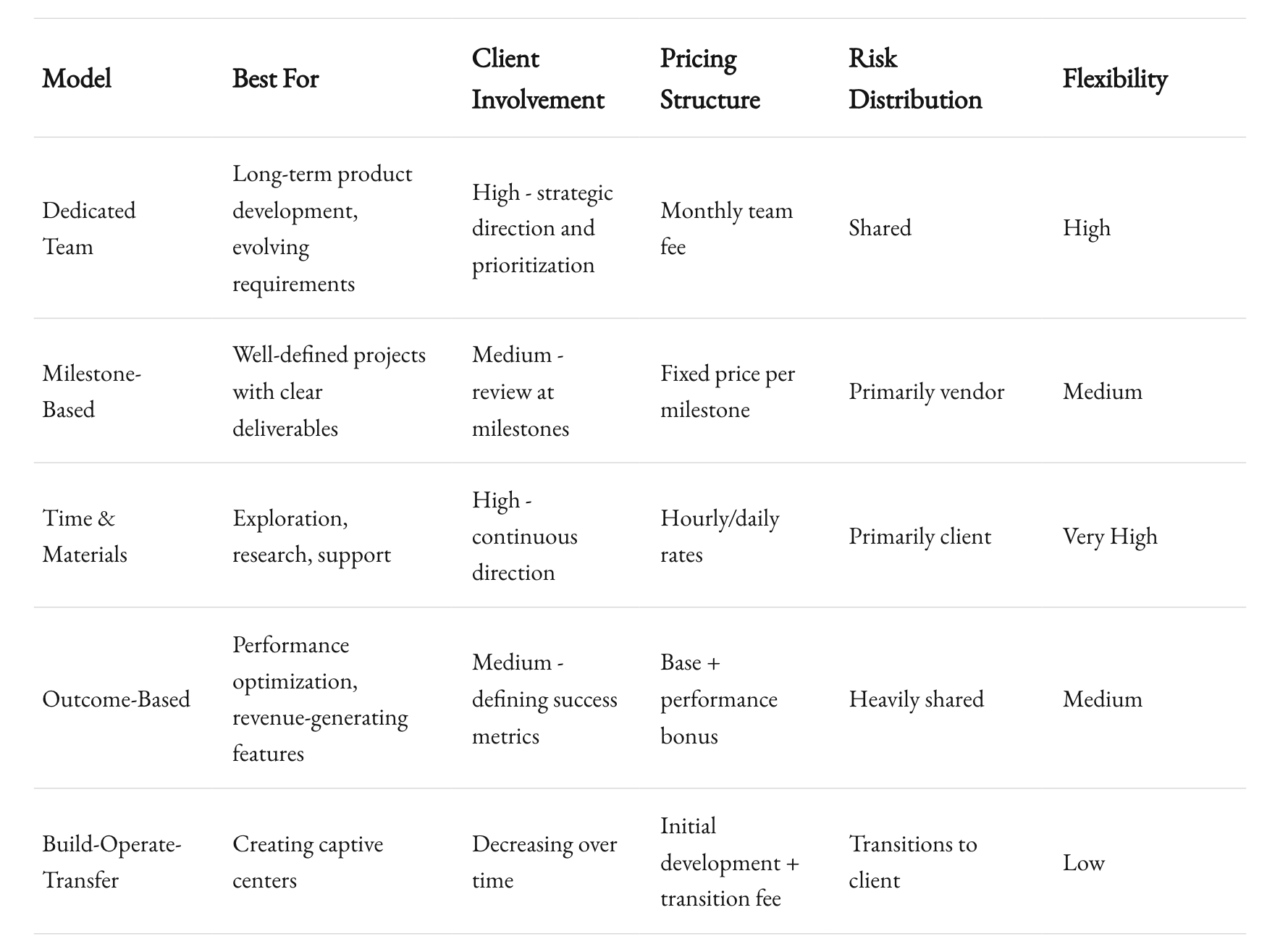
The most successful models we've implemented include:
Dedicated Teams
This model works best for long-term product development with evolving requirements. The client "rents" a stable team that becomes deeply familiar with their business and technical landscape. Pricing typically involves a monthly team fee rather than hourly billing, creating predictable costs while maintaining flexibility in work priorities.
The key success factor is treating the offshore team as an extension of your organization rather than an external vendor. This means including them in strategic discussions, sharing context beyond immediate tasks, and investing in relationship building.
Milestone-Based Development
For projects with well-defined deliverables, milestone-based pricing offers the accountability of fixed-price with more flexibility. Payment is tied to the completion of functional components rather than arbitrary time periods, aligning incentives around delivering working software rather than billable hours.
This model requires clear acceptance criteria for each milestone and a collaborative approach to scope refinement. The most successful implementations include buffer periods between milestones to accommodate the inevitable adjustments that emerge during development.
Outcome-Based Partnerships
The most sophisticated engagement model ties compensation directly to business outcomes. We've implemented arrangements where a portion of our fee is linked to metrics like user adoption, performance improvements, or revenue generation.
This approach requires mutual trust and sophisticated measurement mechanisms, but it creates powerful alignment between technical decisions and business objectives. One e-commerce client tied our compensation partly to conversion rate improvements, which transformed our team from code implementers to active partners in optimizing the customer journey.
Communication: The Make-or-Break Factor
Poor communication kills offshore projects faster than any technical deficiency. The most technically brilliant team will fail if requirements are misunderstood, feedback is delayed, or cultural differences create friction.
Effective offshore communication requires deliberate structure and tools. Daily standups, weekly demos, and monthly strategic reviews create a rhythm that prevents drift and ensures alignment. Documentation becomes crucial—not bureaucratic specifications, but living artifacts that capture decisions and context.
Asynchronous communication tools like Slack, Notion, and Loom help bridge time zone gaps, while periodic synchronous sessions maintain human connection. The best practice we've developed is the "overlap window"—a 2-3 hour period when both teams are online for real-time collaboration, scheduled during morning hours for one team and evening for the other.
Cultural differences in communication require conscious adaptation. Western clients often interpret the communication style of Eastern European or Indian developers as overly formal or indirect. Meanwhile, offshore teams may perceive direct Western feedback as harsh or disrespectful. Successful partnerships acknowledge these differences and establish explicit communication norms.
At 1985, we address this through cultural liaison roles—team members who understand both cultures and help translate not just words but communication styles. We also conduct regular retrospectives focused specifically on communication effectiveness, creating space to address friction points before they damage the relationship.
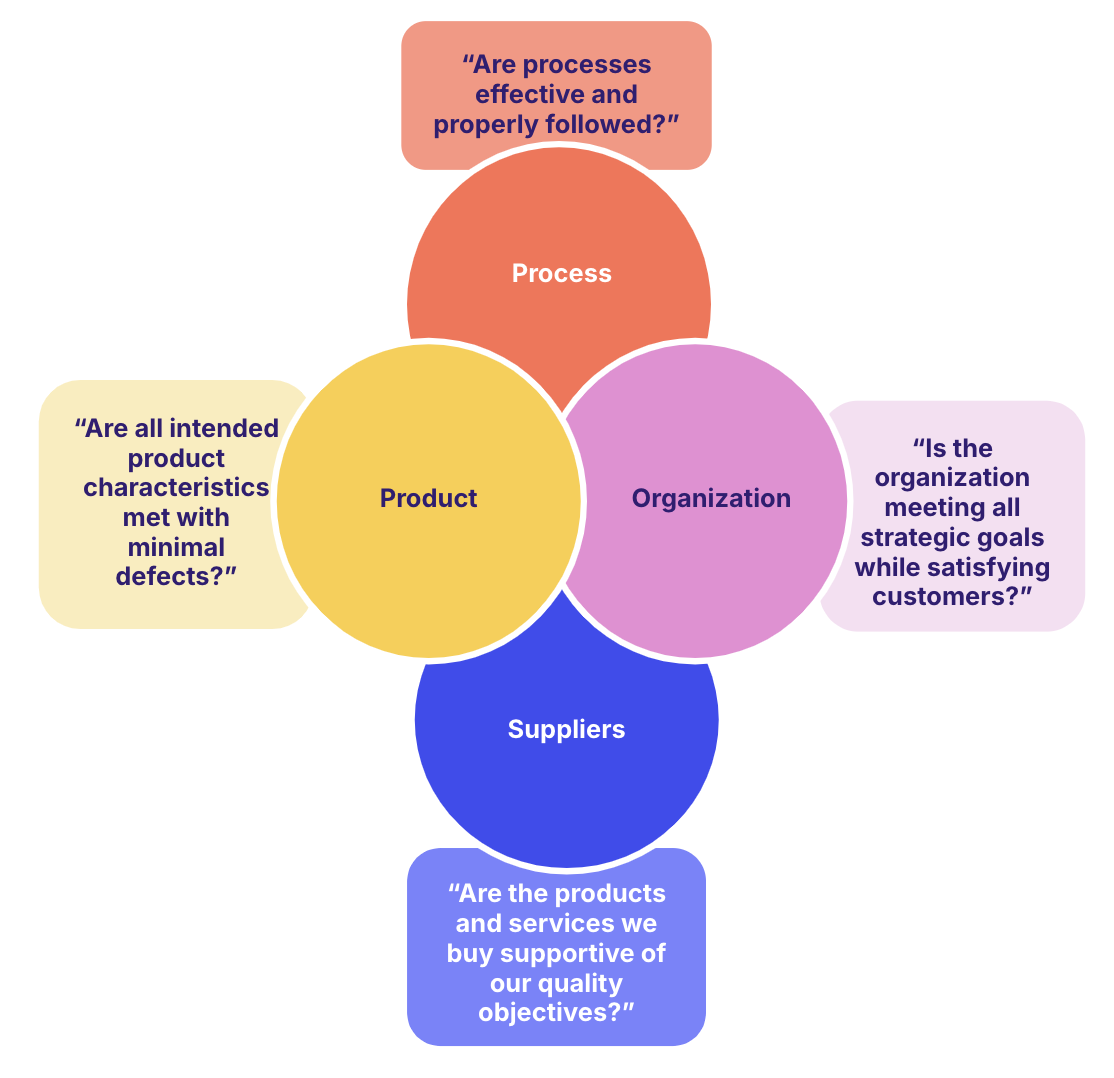
Quality Assurance in Distributed Development
Quality assurance takes on heightened importance in offshore development. Distance magnifies the cost of defects, as the feedback loop for corrections spans time zones and communication channels.
Effective offshore QA strategies go beyond traditional testing. They start with preventative measures like pair programming, code reviews, and automated testing. These practices catch issues early, when they're cheapest to fix.
Documentation of acceptance criteria using frameworks like Behavior-Driven Development (BDD) creates shared understanding of what "done" means. Statements like "Given I am a logged-in user, when I click the purchase button, then my order should be confirmed" leave little room for misinterpretation.
Automated testing becomes non-negotiable in offshore contexts. Unit tests, integration tests, and end-to-end tests create a safety net that catches regressions and validates new features. At 1985, we maintain a test coverage threshold of 80% for critical code paths, with continuous integration pipelines that run the full test suite on every code change.
The most sophisticated offshore teams implement "shift-left" testing, where QA specialists participate in requirements definition and design discussions. This approach catches potential issues before coding begins, reducing expensive rework cycles.

Security and Intellectual Property Protection
Security concerns often top the list of offshore development anxieties. How do you protect your intellectual property and sensitive data when your code lives on servers halfway around the world?
Modern offshore security practices address these concerns through multiple layers of protection:
- Legal frameworks: Comprehensive contracts with intellectual property assignments, non-disclosure provisions, and clearly defined confidentiality obligations
- Access controls: Role-based access to code repositories, production environments, and sensitive data
- Infrastructure security: VPN connections, encrypted communications, and secure development environments
- Personnel practices: Background checks, security training, and clear offboarding procedures
At 1985, we implement a "need-to-know" principle where developers access only the components and data necessary for their specific tasks. We also maintain separate development environments for each client, preventing cross-contamination of code or data.
For particularly sensitive projects, we offer "clean room" development environments—physically isolated spaces with restricted device policies, monitored internet access, and enhanced security protocols. While rarely necessary, these environments provide peace of mind for clients in regulated industries or those developing proprietary algorithms.
Managing Offshore Teams Effectively
Managing offshore teams requires a different playbook than co-located teams. The distance amplifies both successes and failures, making leadership even more critical.
Effective offshore management starts with clear expectations and metrics. Key performance indicators should focus on outcomes rather than activities—features delivered rather than hours worked. These metrics should be transparent to the entire team, creating shared accountability.
Regular one-on-one meetings between team members and their direct managers provide space for concerns that might not surface in group settings. These conversations often reveal early warning signs of misalignment or dissatisfaction before they impact project outcomes.
Team stability deserves special attention in offshore contexts. Developer turnover creates disproportionate disruption when knowledge transfer spans time zones and cultural differences. At 1985, we implement retention strategies including career development paths, technical mentorship programs, and competitive compensation packages tied to client satisfaction.
Recognition practices should accommodate cultural differences. Public praise that motivates Western developers might cause discomfort for team members from more collectivist cultures. Effective managers adapt their recognition approach to the individual preferences of team members while ensuring all contributions receive appropriate acknowledgment.

The Future of Offshore Development
The offshore development landscape continues to evolve rapidly. Several trends will shape its future in the coming years:
AI-Augmented Development
AI coding assistants like GitHub Copilot and Amazon CodeWhisperer are transforming development productivity. These tools have particular impact in offshore contexts, where they help bridge language gaps and standardize code quality. At 1985, we've seen up to 30% productivity improvements for certain tasks after implementing AI pair programming tools.
Specialized Micro-Teams
The future of offshore development isn't monolithic teams but specialized micro-teams with deep expertise in specific domains. Rather than general-purpose developers, companies are seeking specialists in areas like payment processing, recommendation engines, or specific regulatory compliance frameworks.
Hybrid Work Models
The pandemic normalized remote work globally, blurring the distinction between "offshore" and "distributed" development. The most effective models now combine local and offshore resources in fluid teams organized around capabilities rather than geography. This approach preserves the economic benefits of offshore while reducing communication friction.
Value-Chain Integration
Offshore partners are moving beyond pure development to integrate across the software value chain. This includes product strategy, user research, design thinking, and growth marketing. The most sophisticated offshore partners now function as innovation labs rather than code factories.
Beyond Outsourcing
The most successful offshore relationships transcend the traditional client-vendor dynamic. They become true partnerships where both parties invest in mutual success, share risks and rewards, and build long-term capabilities together.
At 1985, we've witnessed this evolution firsthand. What began as tactical cost-saving engagements have matured into strategic partnerships where we co-create products, share in their success, and build institutional knowledge that spans projects and years.
The future belongs to companies that view offshore development not as outsourcing but as a strategic capability—a way to access global talent, accelerate innovation, and build more resilient development ecosystems. Those who master this approach gain not just cost advantages but sustainable competitive differentiation in an increasingly digital world.
The borders between countries may remain, but in software development, the only borders that matter are the ones we choose to maintain. The most innovative companies are erasing these boundaries, creating truly global teams united by shared purpose rather than shared office space.
The question isn't whether to go offshore—it's how to do it right.



